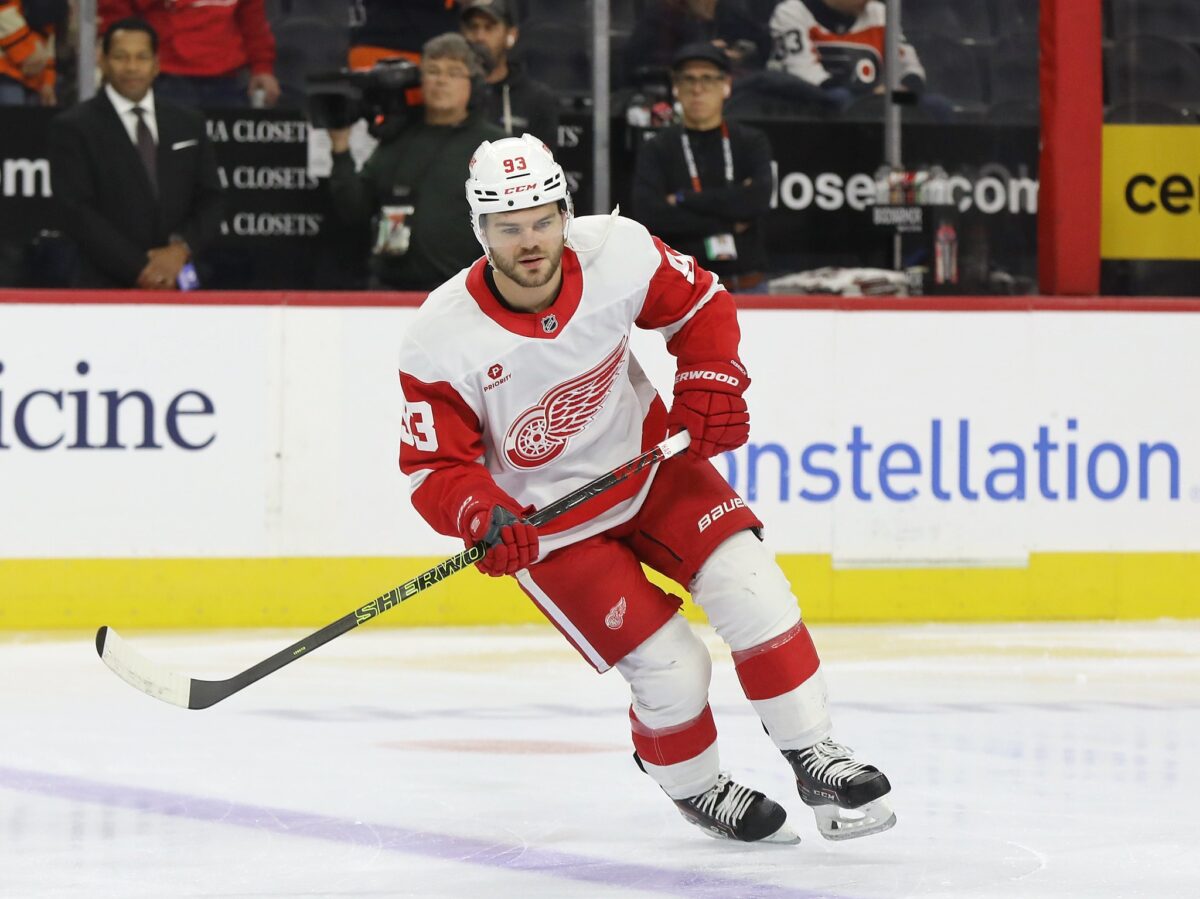That’s a wrap – the 2024-25 season for the Detroit Red Wings has reached its end. The playoff drought continues.
Now, the focus turns to the offseason. And it will be a pivotal one, alright.
We’re going to take it slow. No jumping in with immediate changes that need to be made. You have to fully analyze the situation first to understand how and why we got here.
So to kick off our offseason analysis, we’ll revisit a pivotal moment from the 2024-25 campaign: Detroit’s decision to part ways with Derek Lalonde and hire Todd McLellan as head coach. Examining the impact of that coaching change offers valuable insight into how the team evolved afterward – and may help shape expectations for the Red Wings as McLellan enters his first full season at the helm in 2025-26.
Red Wings: McLellan vs. Lalonde
The charts below show how the Red Wings performed under Lalonde (34 games) and McLellan (48 games). Also included are percent changes to show how much (or little) these major statistics differed after the coaching change.
| All Situations Metric | Lalonde | McLellan | % Change |
| Points % | 0.441 | 0.583 | 32.20% |
| GF/GP | 2.56 | 3.08 | 20.31% |
| GA/GP | 3.26 | 3.08 | -5.52% |
| PP% | 22.5% | 30.2% | 34.22% |
| SH% | 68.8% | 71.4% | 3.78% |
| 5v5 Metric | Lalonde | McLellan | % Change |
| CF/60 | 52.9 | 56.07 | 5.99% |
| GF/60 | 1.94 | 2.21 | 13.92% |
| xGF/60 | 2.07 | 2.64 | 27.54% |
| HDCF/60 | 8.57 | 10.34 | 20.65% |
| 5v5 Metric | Lalonde | McLellan | % Change |
| CA/60 | 62.22 | 57.36 | -7.81% |
| GA/60 | 2.33 | 2.40 | 3.00% |
| xGA/60 | 2.49 | 2.65 | 6.43% |
| HDCA/60 | 10.25 | 11.70 | 14.15% |
After McLellan was hired, the team started scoring more – an 20 percent increase from Lalonde’s tenure. This was mostly buoyed by the power play, which jumped from 22.5 percent to 30.2 percent.
In addition, the Red Wings were able to generate more chances from high-danger areas at five on five, as evidenced by the 27.54 percent increase in expected goals-for (xGF/60) and 20.65 percent increase of high-danger chances-for (HDCF/60). Five-on-five goals also jumped roughly 14 percent under McLellan, but there’s valuable context there that needs mentioning. Despite the scoring boost, the Red Wings ranked in the bottom-third of the league under both coaches when it came to five-on-five goals for.

On the flip side, the Red Wings actually gave up more chances under McLellan (and Trent Yawney) than they did with Lalonde and Bob Boughner. High-danger chances-against (HDCA/60) had the greatest increase – jumping 14.15 percent after the coaching change.
Otherwise, the differences weren’t too great. Still, team defense should be a focal point of the offseason given the fact that Detroit ranked poorly in all of these metrics when compared to other NHL teams.
Final Word
This summer, McLellan, Yawney, and company will have a full offseason to build out their game strategy after joining the organization on the fly. They’ll also have the opportunity to work with Steve Yzerman to construct a roster full of players that fit their system.
Related: Red Wings Building Momentum Toward a Promising 2025-26
The Red Wings improved under McLellan’s tutelage, no doubt. More importantly, young players like Marco Kasper and Albert Johansson took a major step forward in their development paths with the new coaches. That said, there’s plenty of work to be done. The organization must improve five-on-five offensive production, overall team defense, and the penalty kill to give themselves a shot at the 2026 NHL Playoffs.
How will they do this? Stay tuned for continuing coverage of Detroit’s offseason, including contract projections, free agent targets, draft talk, and much more.
Data courtesy of NHL.com and Natural Stat Trick.
